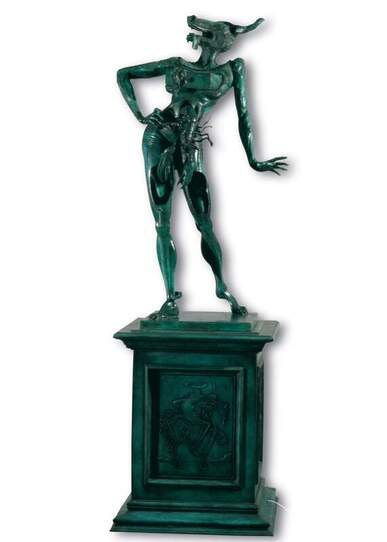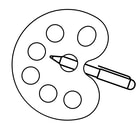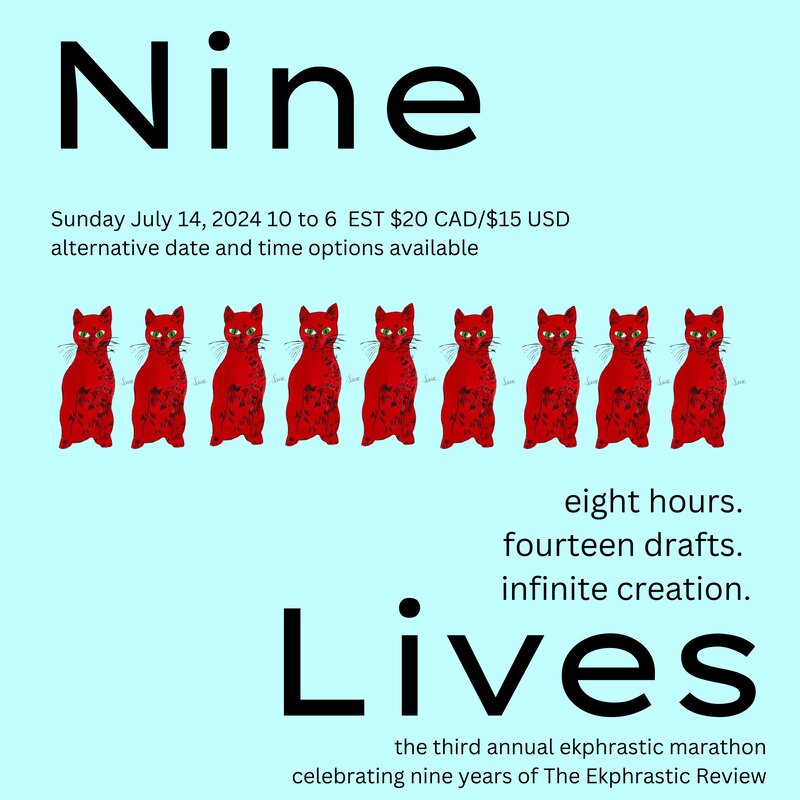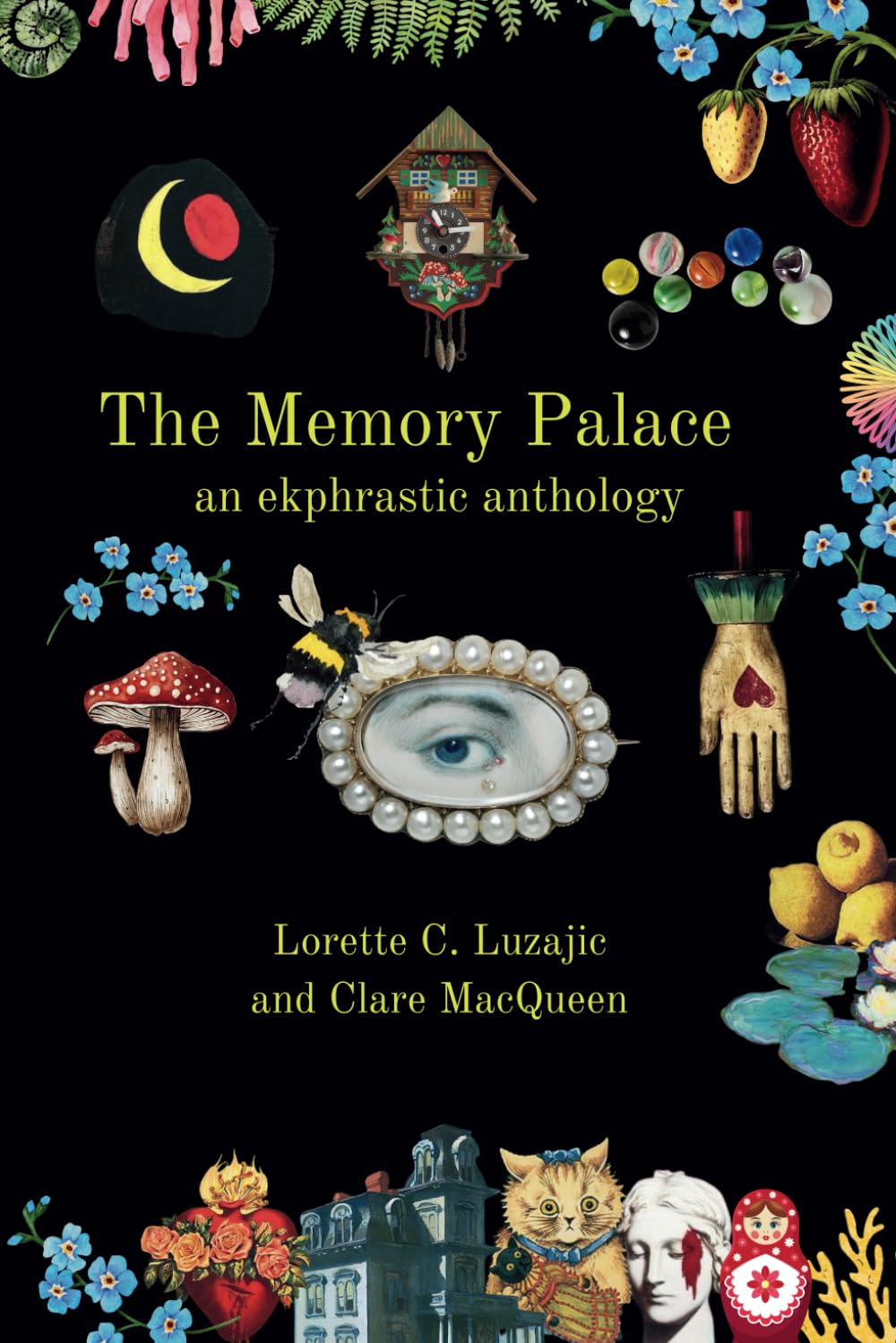|
Dali's Minotaur Dalí’s Minotaur stands on his plinth like he’s posing on the red carpet – all teeth and tits and toes. He has one hand on a cocked hip and the other’s at a right angle to its dead-straight arm. His mouth’s open and a tongues lolls out of his big, square head. All sculptures are rigid, just as all paintings are still. However, Dalí’s Minotaur isn’t just set in bronze. He’s fixed in that unnatural stance. The pose of modernity’s fashion and ideals. In the myth the Minotaur is the child of Pasiphaë - the Queen of Crete - and the Cretan bull. He lives at the center of the labyrinth, the impenetrable maze built by Daedalus and Icarus under the orders of Pasiphaë’s husband, King Minos. The monster is regarded as abnormal, a deviation from nature’s way. Its story is one of the best known in Greek mythology. And for many the Minotaur is the archetypal Greek monster, the pinnacle of ugliness just as Athens was the pinnacle of a harmonious society. The myth is a tale of normality triumphing over weirdness, of the heroic status quo slaying the deviant. But instead of a hero killing the monster, Dalí’s Minotaur has adopted the pose of normality. The mythological beast was slain. Dalí’s beast was castrated, stripped of its uniqueness, and made to walk the catwalk. The function of myth is to relate a people’s values and ways within a social context. Art has played a similar role throughout history. Ancient Greece, particularly the Athenians, valued harmony and concord above all else. It can be said that its monsters are representations of discord. Heroes like Theseus ensured that balance was maintained, that harmony held sway. When he went into the labyrinth and killed the Minotaur he acted as an agent of normality. Dalí’s Minotaur was created in 1981, a year into “the Greed Decade.” Brett Easton Ellis would write about the conformism that defined the age in American Psycho. Patrick Bateman, its protagonist, sums up the time’s ugliness when he says “I want to fit in.” Minotaur adopts the pose of that decade but wears it like someone else’s skin. It’s not the monster’s natural form. But he has had it forced on him, so he conforms to normality’s values. The lines of Minotaur’s muscles look misshapen and knotted, as if they were kneaded into shape rather than sculpted. Dalí angled that cocked hip too far for it to be sincere. And he juxtaposed these signifiers of banal sexiness with genuine madness. A lobster crawls from Minotaur’s belly. A drawer juts from his chest and another sticks out from his ankle like a fractured bone. Gaping holes in his thighs hold a goblet and a perfume bottle and a golden key hangs from its kneecap. Drawers and keys and perfume bottles are normal, everyday objects. But here they serve to highlight the normal, everyday madness of our expectations. The Minotaur should not be made to pose like a photographer’s model. But it is what is expected today, even of monsters. Expectations are dangerous and “should” is a bad word. It’s a byword for disappointment, a dissatisfaction with oneself or the world or both. Minotaur is a sculpture of that disappointment and its implications. For centuries art was dedicated to conveying the emotions of mankind and its world through beauty. Even the portraits of suffering were painted to be beautiful. The Renaissance’s pietas depict grief and death and pain through exquisite fineness. Dalí inverted that mission with Minotaur. By taking the standard of beauty and forcing one of ugliness’s definitions into its shape, he revealed that “beauty” is neither intrinsically worthwhile nor a reasonable expectation. Its tropes are not what make something beautiful. These things are ballgowns and tuxedos and abs and asses - signs of wealth, beauty, satisfaction, and perfection. They are not one-size-fits-all. And yet they have become expectations and standards. Standards aren’t just made of the clothes we wear and shows we watch and drugs we take. They’re made of our desires, dreams, fears, values - the elements of normality. Standards exist foremost as ideas. Like the Minotaur, the one and only place they definitely exist is in our minds. They have little bearing on reality, and belong to what Lenny Bruce called “what should be, a terrible lie that someone gave to the people long ago.” He said that “truth is what is. And what should be is a fantasy.” The Minotaur only exists in our fantasy. Dalí’s Minotaur is real. Ideas may not be tangible but they are as real as any city. They have the power to shape societies and ages. Dalí was a man of many ideas. His art impacted all manifestations of modern culture – art, music, film, fashion. Like all artists he stole from the sources around him. Minotaur melds myth and fashion into a sculpture of ordinary madness. Its lines, that seem so bizarre and freakish and cracked, trace the frame of the 21st century. This is an age, like all before it, that squeezes itself into an idea that doesn’t fit. In centuries gone by religions and empires tailored that idea. Today it is pop culture and fashion that have sculpted our images. Both our inner and outer reflections. Minotaur salutes the viewer with his cocked hip and wears our expectations’ uniform. It emphasizes the beast’s grotesqueness, clings to his angles and lumps, bends him out of shape. Dalí dreamt up this beast from the normality that fills our high and low cultures. Minotaur is still a monster. But he’s wearing hot-pants. James Fleming James Fleming is a teacher and writer, based in the Czech Republic. He has opinions and writes them down.
0 Comments
Your comment will be posted after it is approved.
Leave a Reply. |
The Ekphrastic Review
COOKIES/PRIVACY
This site uses cookies to deliver your best navigation experience this time and next. Continuing here means you consent to cookies. Thank you. Join us on Facebook:
July 2024
|




